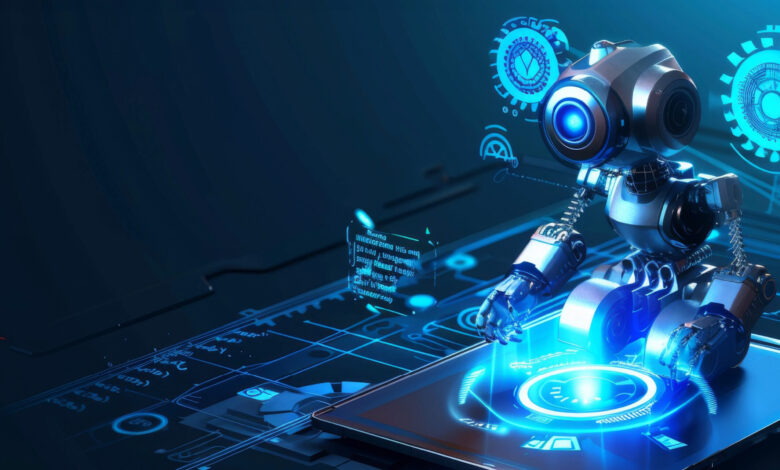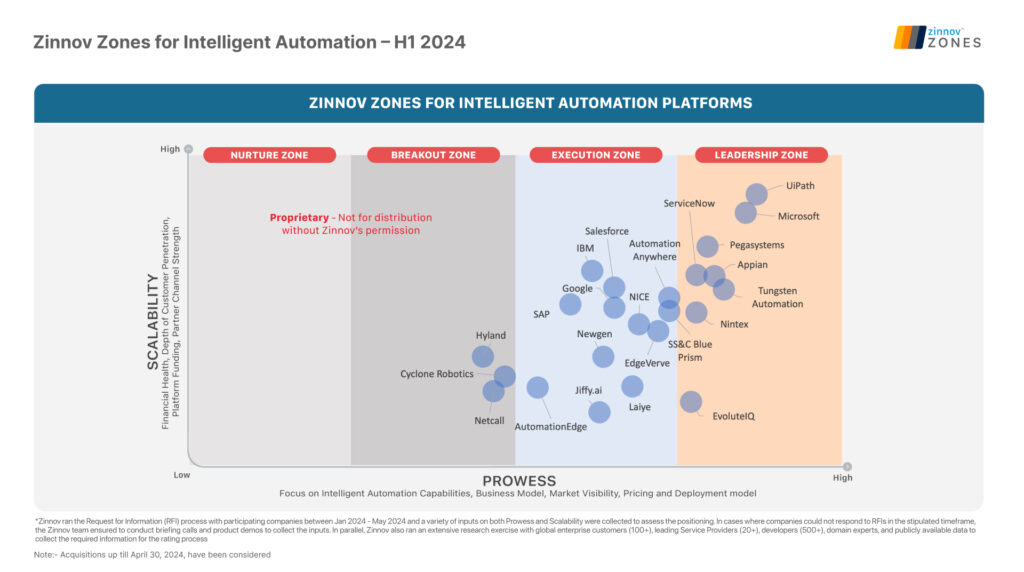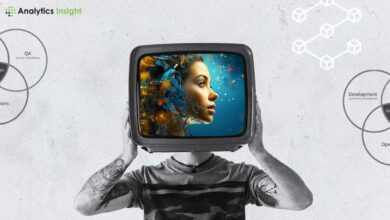8 Intelligent Automation powered by Generative AI Trends

The enterprise landscape is on the cusp of a new era – Intelligent Automation 2.0 powered by Generative AI. Businesses are progressing beyond mere task Automation, forging self-learning systems capable of data analysis, independent decision-making, and execution of entire value chains with minimal human involvement.
Intelligent Automation is thus leading a paradigm shift in enterprise operations, propelling the move towards autonomy.
This integration of cutting-edge technologies, including Generative AI, allows businesses to break through conventional barriers. Intelligent Automation enables streamlined processes, increased productivity, and superior customer experiences by facilitating autonomous workflows.
As companies adopt this transformative technology, they are setting the stage for a future where not only rule-based tasks, but even “creative” tasks are getting automated given the advent of Intelligent Content Generation (ICG) that harnesses the power of Generative AI to revolutionize content creation and management.
Based on our in-depth interactions with platform company CXOs, Enterprise decision-makers, Service Provider practitioners, and industry SMEs, there are eight key trends that we believe will shape the Intelligent Automation landscape in 2024 and beyond.
1. Overcoming traditional limitations, Enterprises will unleash the potential of Autonomous workflows
Organizations are now moving towards adopting autonomous workflows. These workflows don’t just automate a singular process, they are self-learning systems that can automate an end-to-end value chain with their expert decision-making and execution. With no human involvement required, these workflows can analyze data, make decisions, and execute tasks – all in one go.
Such autonomous workflows are designed to overcome the limitations found in conventional automated workflows. This will give rise to the era of creative Automation, with Intelligent Automation 2.0 automating even creative tasks.
2. AI agents will rise to deliver human-like interactions and performance
The ascent of digital workers will reshape stakeholder experiences, powered by Intelligent Virtual Assistants (IVA) leveraging cutting-edge Generative AI. This evolution promises a new era of enhanced interactions and efficiency.
These integrated solutions will be able to deliver human-like interactions and personalized responses based on individual customer data, ushering in a transformative landscape for businesses and stakeholders alike. Enterprises that have already deployed advanced AI agents have reported a ~60% reduction in Full-time equivalent (FTE) hours.
3. AI-first coding platforms will drive a resurgence of the citizen development movement
Citizen development powerhouses will realize their potential in 2024. Leveraging Intelligent Content Generation (ICG) that is powered by Generative AI, they will be able to significantly improve developer productivity. Together, the technologies will empower citizen developers to quickly deliver applications, overcoming expertise concerns.
For example, GitHub’s Copilot, an AI-powered code completion tool, has been reported to improve developer productivity by up to 50%.
4. Mid-market companies will power the current wave of Automation transcending to Generative AI solutions
Mid-market Enterprises are set to leverage Intelligent Automation 2.0, as it solves their unique problem of limited resources with high-efficiency levels, giving them a competitive edge against large Enterprises.
Mid-market Enterprises will directly leverage Intelligent Automation 2.0, even if they have not deployed traditional Automation solutions, due to such benefits.
5. Enterprise Centers of Excellence (COEs) will evolve with new AI-focused job roles to enable Intelligent Automation 2.0
With Intelligent Automation 2.0, new job roles, such as Prompt Engineers, AI Auditors, AI Ethicists, and AI Trainers, are set to emerge and gain prominence within Enterprise COEs.
Existing job roles would also transform; for example, a software developer would now function as an AI-enabled software developer and would be required to undergo reskilling to understand and implement AI algorithms, creating more sophisticated solutions to meet user needs.
6. Responsible AI use will be the top priority for making investment decisions
In 2023, the European Union strengthened its commitment to prioritize AI nationally by advancing the European Union Artificial Intelligence Act (EU AI Act). In the coming year, governments worldwide, inspired by the EU, will introduce comprehensive regulations, empowering Enterprises to establish robust ethical guardrails for responsible AI utilization.
Ethics and data transparency will be a top priority for Enterprises leveraging Intelligent Automation 2.0. A large number of enterprises are already focusing on developing risk mitigation strategies for Intelligent Automation 2.0 use. These evolving laws mark a pivotal shift, ensuring a structured framework for AI ethics and accountability, fostering trust and responsible practices in the ever-evolving landscape of Artificial Intelligence.
7. There will be an increased focus on automating “Industry-specific” use cases
Since enterprises have already automated many horizontal use cases, their focus has now been shifted to automating various vertical, industry-aligned use cases. This approach leads to greater value creation for Enterprises.
Additionally, technological advancements and a growing platform ecosystem centered on “verticalization” will be responsible for driving increasing Automation demand and adoption of these vertical use cases among Enterprises.
8. Complex and multimodal data will now be used to enhance data-based decision-making and execution of workflows
Previously, technologies such as Intelligent Document Processing (IDP), were largely capable only of handling and automating structured data with high accuracy. However, the emergence of next-generation AI technologies has significantly broadened capabilities to encompass the management of complex and unstructured data.
With these advancements, the handling of more intricate and multi-modal data formats has become achievable, thanks to the capabilities of Generative AI.
Enterprises now have the building blocks to create autonomous workflows that harmonize human actions, data-driven decisions, and seamless execution.
Therefore, we’ve seen that the Enterprise spend on Automation technologies is increasing; it’s expected to grow at a 30-40% rate and will cross the USD 200 Bn mark in the next 5 years. This opens up newer opportunities for Automation Platform players.
To assess industry preparedness for the burgeoning demand for Intelligent Automation, Zinnov Zones for Intelligent Automation (IA) Platforms – H1 2024 stands as the most comprehensive evaluation tool for Automation platforms. This exhaustive analysis, encompassing ~ 140 platforms and specialist vendors, meticulously evaluates technical prowess and scalability parameters to identify the leading players and visionary forces shaping the landscape. The study provides a comparative analysis of platforms based on their overall capabilities across the entire Intelligent Automation lifecycle. This lifecycle assessment encompasses eight key categories: Intelligent Automation (IA) itself, Intelligent Content Generation, Process Intelligence, Intelligent Document Processing (IDP), Robotic Process Automation (RPA), Low Code Application Development, Intelligent Virtual Agent (IVA), and Automation Orchestration.

Reflecting the dynamic nature of the Intelligent Automation landscape, eight platforms have emerged as leaders in the overall Intelligent Automation category: UiPath, Microsoft, Pegasystems, ServiceNow, Appian, Tungsten Automation, Nintex, and EvoluteIQ.
These platforms have demonstrated a strong commitment to advancing full-scale Intelligent Automation capabilities, enabling broad enterprise deployment. Through continuous product innovation, strategic Generative AI investments, and the development of robust ecosystems, they have significantly expanded their market reach and influence.
As these technologies continue to develop, we can expect to see even more innovative applications that will transform the way we work and live. Those who embrace Intelligent Automation will be well-positioned to thrive in the years to come.



